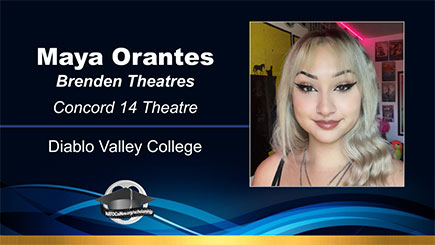|
Movies are not just pictures and words, they are also experiences. The silver screen engulfs the audience by creating a dramatic effect that is not comparable to any other media outlet. The blockbuster, The Shining, a sinister film, must be seen on a big screen. There is not much dialogue throughout this film; hence, the cinematography and the score, as seen at the theater, allow the audience to fully experience the ominous and isolating effects of the haunting film. The movie opens with dreadful music playing in the background, as we see Jack Torrence, the antagonist, driving his car through the lengthy, winding, green mountains of Colorado, on his way to the Overlook Hotel, to become the winter caretaker. One car, on a big screen, isolated from any form of civilization, paired with the foreboding music, creates the intensely dramatic effect of suspense and fear. This sets the stage for the mood carried throughout the film. The surround sound of a movie theater adds to the uneasy feeling created, when listening to the score of this film, especially the opening scene. The Shining is diminished when not seen in theaters. The scene where Jack's wife, Wendy, and their son, Danny, walk through the iconic maze exemplifies this. They both appear strikingly miniature in the maze; in order to fully experience this vastness, this scene must be viewed on the big screen. Another important scene to watch in theaters is when Danny is riding around the hotel on his big wheel; the sound and visuals of this scene invoke terror. Each time he turns a corner, as he rides over the rugs, onto the hardwood floor, the jarring sound of the switching terrain must be heard in theaters to create the perfect uneasiness. One of the most iconic scenes is when Danny, again riding on his big wheel, sees the ghosts of the Grady twins, as he drives past room 237. Room 237 was believed to be the most haunted in the hotel after Mr. Grady brutally murdered his wife and twin daughters there. This scene is particularly chilling to see in theaters, as it cuts from the twins saying, "come play with us forever and ever, and ever, and ever...", to their dead bodies, all set to the haunting score. When you see a movie in theaters, it is a shared experience with others that you would not get anywhere else. For example, when Danny is yelling 'Redrum!', or when Jack shouts his iconic line, 'Here's Johnny!', it is an even more thrilling experience when shared. Moreover, the climax of the plot, when Jack completely loses his mind and attempts to murder his family, would not be as impactful seen alone, at home, or on a mobile device. During this part of the movie, it feels as if there is no escape for Wendy and Danny. In the darkness of a theater, the shared experience of viewing the film with others, without distractions, makes the audience feel something akin to what the characters feel. However, when viewed alone, at home, or on a device, this scene is not as affecting. As Wendy is looking for Danny, while he is being hunted by an ax-wielding Jack, the imagery is transcendent. Even when Jack is simply walking around the hotel, the sound of the wind blowing creates a sense of stillness, when viewed in the theater. Additionally, in the scene when the elevator door opens, and a deluge of blood escapes, flooding the lobby, the combination of the big screen and surround sound in the theater, makes the experience more visceral. In the final scene, with Jack chasing Danny through the snowy maze, the score is piercing and the visuals are cold and eerie, making audiences feel some of what the characters on screen are feeling in a way that cannot be duplicated at home. Namely, when seen in the moviehouse, we feel terrified in much the same way Danny does, when trying to get away from Jack, and we enjoy some of the relief Danny feels when he is able to outsmart his father and escape with his mother. When we exit the auditorium and walk out into the open air, we breathe deeply, feeling we too have escaped the clutches of the Shining. In conclusion, The Shining, a hauntingly beautiful film, must be seen on the big screen. When viewed at home or on a mobile device, the experience is diminished. The visuals and score are meant to be experienced on the big screen. |
|
||||||
Copyright ©
2025
NATO CA/NV

